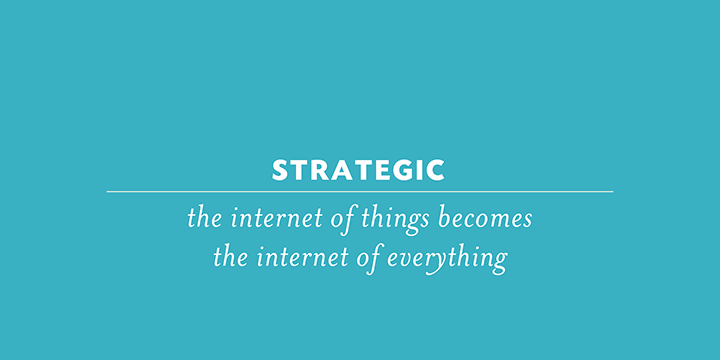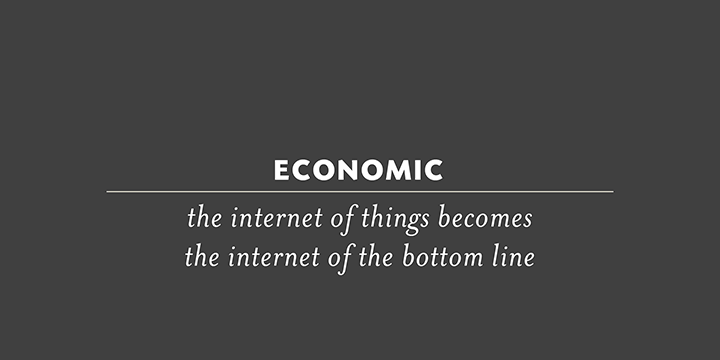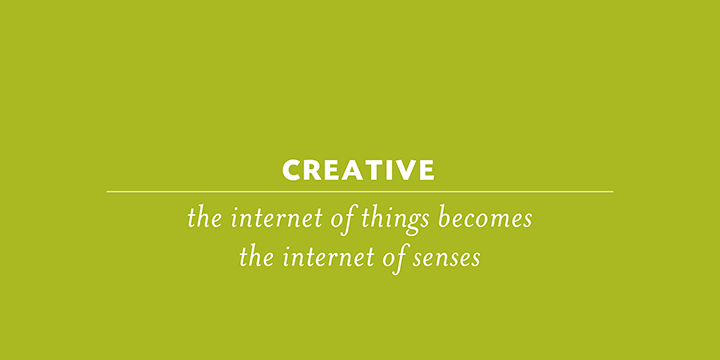Davis Brand Brief: January 2014

The Internet of Everything (IOE) is upon us. Brand managers now include it in their strategic planning or risk being left behind.

Just a few years ago, Cisco predicted that 50 billion devices would be connected to the Internet by 2020. As we wrap up the first month of 2014, this prediction does not seem at all far-fetched.
Whether it’s wearable technology (the most prominent trend at this year’s Consumer Electronics Show (CES)) or the rumored and much-anticipated “iWatch,” the IOE is changing the way we live and interact with brands. Brands must now live and interact with us.
The IOE is proving to be a powerful platform for the healthcare industry. Google is working on a first-of-its-kind Smart Contact Lens that monitors blood glucose levels through tears in diabetic patients. If successful, this product will change the game in healthcare technology, shifting global perspectives about disease management, with no finger-pricking necessary.
Automotive brands are in a pivotal position to leverage the IOE with cars already viewed as the largest mobile devices. As smart mobility becomes an increasingly integral part of everyday life, and our relationship with cars becomes more about experience than ownership, the “Internet of Cars” is here.
To connect the vast worlds of the IOE, software company Wolfram Alpha is working with Intel to develop the Wolfram Language, which will allow devices to speak the same language. Once complete, this will advance strategic dialogue and collaborations across industries.
While questions of privacy and complexity remain, the Internet of Everything has many exciting strategic implications for brand and consumer data.

The rise of the IOE is not just theoretical. Real dollars are pouring into the marketplace, adding fuel to the firestorm of data, reshaping our economy. Following the 2012 introduction of Google Glass and the popularity of health and fitness-monitoring wristbands, tech companies are introducing more wearable technologies. While designers are working out the kinks in how the technology looks and feels, research estimates that this will have whopping implications, as it becomes a $10 billion market by 2016.
The drag race between leading app-based car services, Uber and Lyft puts it all on the line. Last year, Uber raised venture funding of $350 million, valuing the company at $3.5 billion. But Lyft (and the appeal of its pink moustache to younger audiences) challenged the higher-end black car service late last year by more than doubling its growth pace and revealing a $100 million gross run rate.
Meantime, Google is now interacting with consumers both on and off-line. Its $3.2 billion purchase of Nest gives the company a first-time look at consumer behavior away from the computer or mobile devices. How this may ultimately affect our lives remains to be seen, but here’s an idea of what a Google-fied life at home might look like.
With concurrent purchases of robotics and the $400 million purchase of startup artificial intelligence company DeepMind, Google may one day make our brains irrelevant by doing the thinking for us.

Culturally, being outnumbered by devices has big implications for how we will live, work and communicate. From the bedroom to the tennis court, we like to know how we’re doing. Health and wellness technologies, especially, help consumers feel good (or, at least, a little better) and more in control. Looking to leverage this, several brands are stepping up their games.
Numerous studies show the benefits of a good night’s sleep. Leveraging this, the Sleep Number brand now offers a connected bed. It tracks sleep patterns and offers ambient lighting to relax or gently wake you. If the $8,000 price tag stresses you out, the bed also provides full-body massages. Queue Radiohead: OK computer!
Waking up well rested is essential to a rewarding exercise regimen. Here to help on the running path is Intel’s smart earbuds, which match music to heart rate, allowing exercisers to always have a good beat. On your feet, the Sensoria smart sock coaches wearers on running technique. On the tennis court, Babolat’s smart tennis racket takes a swing at the IOE, giving players real-time feedback on their game.
Add all of this to this app-based health and wellness monitoring, such as this online flu predictor and surprisingly accurate, online menstrual trackers, and pretty soon Siri will be the one telling us to take two Aspirin and call her in the morning.

Brand mangers, designers, technologists and storytellers all have new creative challenges and opportunities to make the most of this moment. Starting with making technology accessible, understandable and enjoyable in everyday life. To this end, the IOE and these creative pursuits keep us intrigued and open to what may come next.
Some say that eating chocolate lights them up. The Cadbury brand brings this feeling to life through its interactive “Joy Jacket” that literally lights up when wearers eat chocolate. Not the best idea for people cheating on their diets, but a fun idea nonetheless.
A tenet of high-quality denim care is never to wash it. This is all well and good until the jeans start to smell less high quality than one might like. Denim brand Naked and Famous is working on a solution to this stinky issue by creating “scratch n’ sniff” jeans that smell like raspberry and mint and Teflon-coated jeans that repel whatever one may spill on them. Also in high-end fashion: welcome the emerging field of 3-D garment design. Soon, MakerBots may become the new tailors and seamstresses of couture, changing our perspective on access to top designers.
Speaking of smells – when words cannot adequately capture the powerful experience of scent, we have the oPhone, which will send smells such as fresh-brewed coffee and freshly baked bread, instead of audio or visual communications, to consumers. These smell-o-grams do not yet have an official name, but “smext” or “smessage” may sound more promising than learning that you’ve just “received a smell.”
January has proven to be a stimulating month for brand trends indeed.

